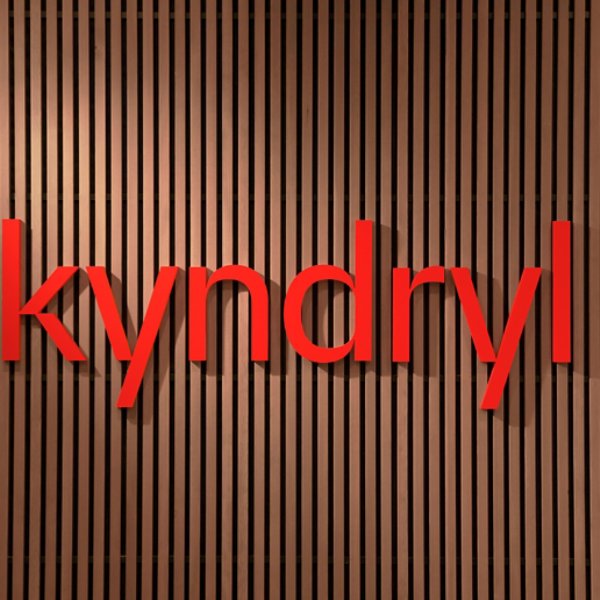Sarah B. Nelson is a design executive, strategist, and researcher known in the design industry for her leadership in design-led co-creation. She has worked with some of the top design organizations to integrate design as a critical practice and adopt the design thinking mindset and tools. Nelson was selected to be Kyndryl’s first Distinguished Designer, acknowledging her work in the field as a leading innovator who is shaping the future of Kyndryl and driving change in the industry.
How do you describe the work you do at Kyndryl on a day-to-day basis?
I’m the Chief Design Officer for Co-creation, part of our go-to-market strategy. I work side-by-side with customers, ecosystem partners, and colleagues to develop a human-centered point of view to challenging problems. As a design-led approach, we anchor challenge exploration and visioning in needs of people. The best part, for me, is that we get to work closely with the amazing expertise Kyndryl has, gluing these cross-functional teams together to create something special.
It’s cool that your role is to use creativity and design to build better systems in otherwise complex, highly technical environments.
First off, let’s talk about creativity. To create is to be human, and I believe creativity is everyone’s birthright. In design, our mission is to unlock the power of our collective creativity. To that end, we use structured methods (you’ve probably seen some in Design Thinking) that help us organize the creative process and ensure we imaginatively solve for the right, well-defined problem. While design majors in the human experience, our approach activates the cross-functional team to make sure we are balancing what’s desirable to people, what’s feasible to create, and what will realize the business goals.
Design, as a profession, sews together deep technical skills in qualitative and quantitative research, design strategy, human cognition, creative technology, information design, and interaction design with visual and brand design. This multi-discipline approach creates experiences that resonate on every level, helping people get things done, while emotionally connecting with our brand.
You’ve started a couple of organizations: Radically Human and Radical Visionary. How do you think about the term “radical”?
I love radicals and tricksters. These are the people who challenge and push us to think bigger, go further, and look at problems in surprising ways. Additionally, at the time I founded those, I wanted to put a stake in the ground for human experience. Now people talk about empathy a lot — but in tech, at the time, the brain always won out over hearts, bodies, social and emotional dynamics. It seemed a radical act. I worked with leaders in the enterprise, and especially emerging women leaders to build teams and design capabilities that led with human experience, in both human-centered design and in cross-functional teams.
How did you find your way to design?
I’m a classically trained violinist. My father is an experimental algorithmic composer who introduced me to the expressive power of technology, data and math. My first computer was a terminal 236, IBM 360. Early on, I got into coding experiences. Remember Eliza the computer therapist? I got that going on an Osborne complete with speech module. I kept chasing this intersection of art and technology all the way through college. When I found human-centered design it just fit.
What work did you do that helped get you recognized as Kyndryl’s first Distinguished Designer?
I was the global lead and curriculum designer for the Enterprise Design Thinking for Sellers program at IBM. We learned what sellers needed out of EDT and adapted the curriculum and the toolset specifically for them: what is going to help them guide customers, uncover opportunities and ultimately show up as partners with a unique point of view.
I also wanted to enable enduring skills growth in the teams — real behavior change. A lot of training is fun to do, but you leave at a loss for what to do next. I created a self-assessment program that enabled teams to chart and track their own progress through the Behavior Change Index. This enabled teams to own their own growth and us to track the impact of our program and pivot where needed.
Ultimately we reached 57 Integrated Accounts and were able to attribute $1.6 billion in deals influenced by the program.
You were at IBM and then went to PepsiCo before coming to Kyndryl. What convinced you to come here?
For me, it’s all about Kyndryl’s potential, culture and the amazing problems we get to tackle. I believe in the leadership (and even more so now that I’ve joined) and that we get the opportunity to create some new, something our own. We all get to do that no matter where we are. How often do you get to do that in a company this size? The breadth of technical talent is stunning and the diversity of customers and industries makes me feel like a kid in a candy shop.
What does it mean to you to be a Distinguished Designer?
Obviously, I am honored at the recognition of my work. As Kyndryls’ first Distinguished Designer, I am most excited about the investment and importance Kyndryl has placed on design and its confidence in the impact of design. This commitment sends a signal to our customers that human-centricity matters and great experiences differentiate.
I am devoted to diversity in technical leadership. Being a DD — and a woman in tech — enables me to light the way forward for emerging designers and design leaders to step into their power, no matter who they are or where they come from.


